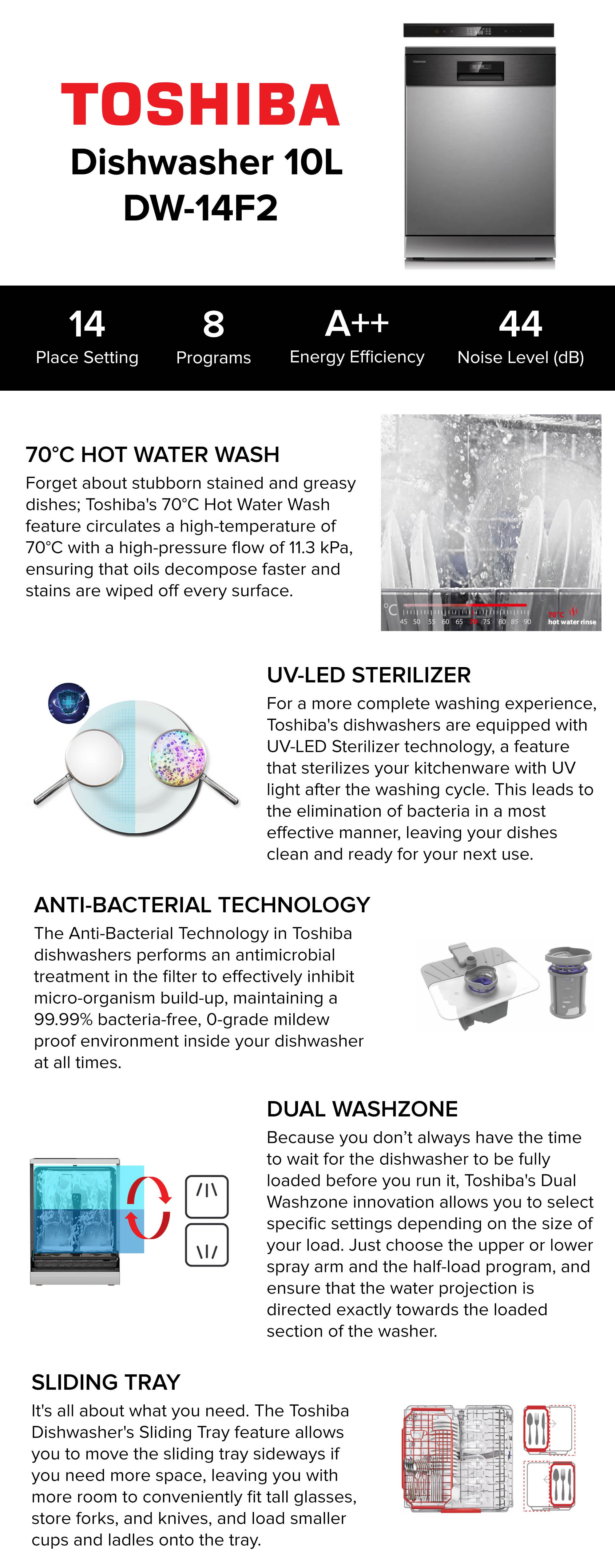Dishwasher 10 L DW-14F2ME(SS) Stainless Steel
Model Number : DW-14F2ME(SS)
4.8
5
Was:
SAR 2949.00
Now:
SAR 2299.00 Inclusive of VAT
Saving:
SAR 650.00 22% Off
 Only 5 left in stock
Only 5 left in stockSorry, this offer cannot be delivered to .

Split in 4 payments of SAR 574.75. No interest. No late fees.Learn more

Split in 4 payments of SAR 574.75. No interest. No late fees.Learn more



1
Highlights
- A three stage hygiene combination that washes the dishes at 70°C, sterilizes them with UV and eliminates 99.99% of bacteria and germs with the antibacterial filter
- This dishwashers are equipped with UV-LED sterilizer technology
- Elimination of bacteria in a most effective manner, leaving your dishes clean and ready for your next use
- Feature that sterilizes your kitchenware with UV light after the washing cycle
Specifications
| Material | Combination |
| Installation | Freestanding |
| Colour Name | Stainless Steel |
| Energy Used | Electric |
| Capacity | 10 L |
| Model Number | DW-14F2ME(SS) |
| Model Name | DW-14F2ME(SS) |
Dishwasher 10 L DW-14F2ME(SS) Stainless Steel
Added to cart
Cart Total SAR 2299.00





